This fruit has been so popular with birds from the very beginning that the whole tree was named after them, "Prunus avium". Its gleaming white flowers shine across the country in April and May. When the fruit is ripe and bitter-sweet in summer, it is harvested they have successfully overcome many obstacles.
During the splendid flowering period there can still be heavy rain or late frost, which destroys many flowers. Hail, drought and pests are also the enemies of the delicate flowers during this time. The Bird cherry, Mother of all Sweet cherries was named Tree of the Year in 2010.
What you should know about the bird cherry

The bird cherry is a deciduous cherry tree up to 30 m high that has been native to Central Europe for more than 10,000 years. Cherry pits found on the northern edge of the Alps could be dated to the Stone Age. The bird cherry was cultivated in the area around the Black Sea as early as the 4th century BC. It then quickly spread throughout Europe via the Roman Empire and today there is an approximate annual harvest of 2 million tons of the cultivated cherry.
The wild form of the sweet cherry has existed in our areas for a long time, but no one thought of growing the bird cherry, the inhabitants of the Mediterranean region took over that. There are now two subspecies with larger and even sweeter fruits. Bird cherries are often found in long decorative rows in domestic orchards.
Growing in the wild, it is distributed across Europe to Asia Minor, the Caucasus, Crimea and north-west Africa. The bird cherry loves nutrient-rich, loamy, not too dry soil. It is often found growing individually on the edge of mixed and deciduous forests, where it can reach a height of up to 30 meters. In the open countryside, it can grow up to 20 meters high, it can live up to 150 years and is equipped with a trunk that is up to one meter thick above the roots.
The fruits of the wild form are significantly smaller than those of cultivated cherries. They are only 1 cm thick in their spherical shape, have very long stems and usually a non-glossy, strong black-red color. The sweet cherries in fruit growing are all created by refining selected branches that are grafted onto the bird cherry. This can still be seen well on the trunk of the cultivated cherry, because it shows bulb-like thickenings at a trunk height of about 2 meters, places where the tree was grafted.
The bark of the bird cherry has a dark red, glossy, smooth surface that curls horizontally from the trunk in cork nodules, similar to that of the birch. Just like the birch, the bird cherry does not form a bark and its roots develop evenly in width and depth. In old trees there are often large roots that go high along the trunk and, through the so-called “root spawn”, produce new shoots near the mother tree.
The bird cherry belongs to the rose family, like almost all beautifully blooming fruit trees. Depending on the area, it blooms in April or May and is covered with thousands and thousands of delicately scented five-petalled flowers. Whole branches of the tree are covered with fragrant white and are clearly visible from afar. The decorative trees only bloom for a week and, if it is too dry, only for five days. As a bee pasture and nesting place for birds, they are an important wild wood. The bird cherry has a beautiful round and broad treetop, its stalky leaves are serrated and a fresh green color. Under the leaf at the end of the stem there are two to three reddish nectar glands that attract ants and predatory insects that eat pests.
In the Biedermeier period, their reddish, valuable wood was extremely popular for furniture production, especially for inlays. Today it is experiencing a renaissance and is being used again for particularly high-quality furniture. Cherry gum or fool's gold is the name given to the resin that escapes, which was used to stiffen felt hats or dissolved in wine as a cough syrup.
Bird cherries are harvested in July, when the small, dark fruits have reached their deepest level of ripeness and achieved their full aroma with a bitter, sweet taste.
Importance to health
The high proportion of anthocyanins in bird cherry has a diuretic, astringent, hematopoietic, expectorant and anti-inflammatory effect. In the past, the bark, leaves and stems were also used for medicinal purposes.
Today, as then, the kernels of the fruit are kept, sewn in linen bags and then warmed up, used as a heating pad, which helps with pain, lumbago, cold feet and rheumatism.A good night's sleep on a cherry pillow is praised, especially by allergy sufferers. A healing tea against stubborn cough is prepared from the stems of the bird cherry. It loosens the mucus, which can then be coughed up more easily. Those who suffer from anemia and are weak as a result are helped with black cherry tea.
Ingredients & nutritional values
Bird cherries have many valuable ingredients to offer. In addition to the important minerals iron, potassium and calcium, the body also absorbs sufficient folic acid, vitamin C, provitamin A, enzymes and tannins when the cherries are consumed. It is low-calorie enjoyment, because 100 grams reach less than 60 kilocalories.
Intolerances & allergies
Birch pollen allergy sufferers can suffer when consuming bird cherries, as a cross allergy could occur. The consumption of cultivated cherries or cultivated bird cherries often leads to flatulence and lumps in the stomach. These unpleasant phenomena do not occur with fruits that come from wild trees.
For those with stomach ailments, the bird cherries are more suitable as a compote, then there is no flatulence because they are easier to digest.
Shopping & kitchen tips
Bird cherries are seldom offered for sale at market stalls; they are usually found in home gardens and are consumed from there. If it is known where the attractive fruit trees can be found, only ripe cherries should be harvested because they do not ripen. This also limits their storage time in the refrigerator compartment to a maximum of one week.
In the case of an offer on the market, care should be taken to ensure that the stem is beautifully green and smooth so that a really fresh fruit can be consumed.
Preparation tips
It is largely unknown that the green foliage of the bird cherry is also suitable for consumption. With its almond and cherry flavor, it is very nutritious and a nice addition to salads. The blossoms of the bird cherry are edible and a brilliant appearance in salads.
Even if the bird cherry is small in stature and cannot be pitted so easily, it is mainly processed into jam and used to distill schnapps. With a steam juicer they are wonderfully processed into delicious juice or an aromatic jelly is cooked.

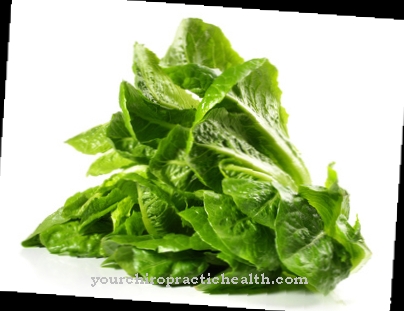
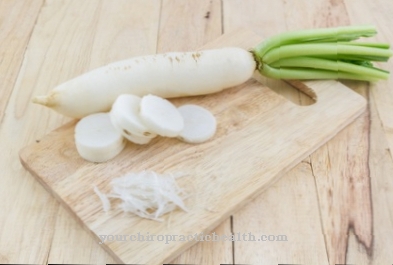
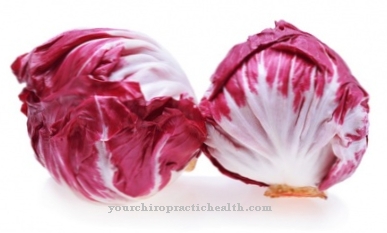
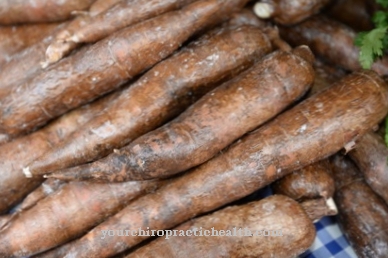

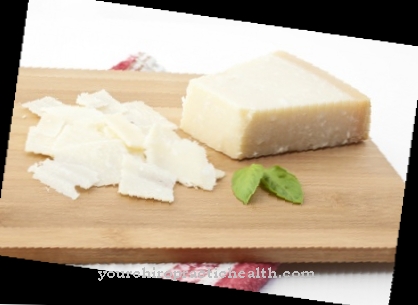










.jpg)







.jpg)


